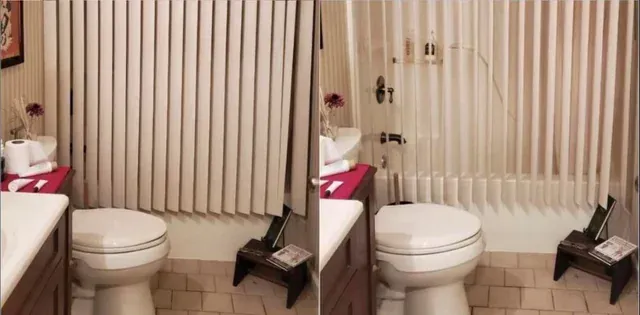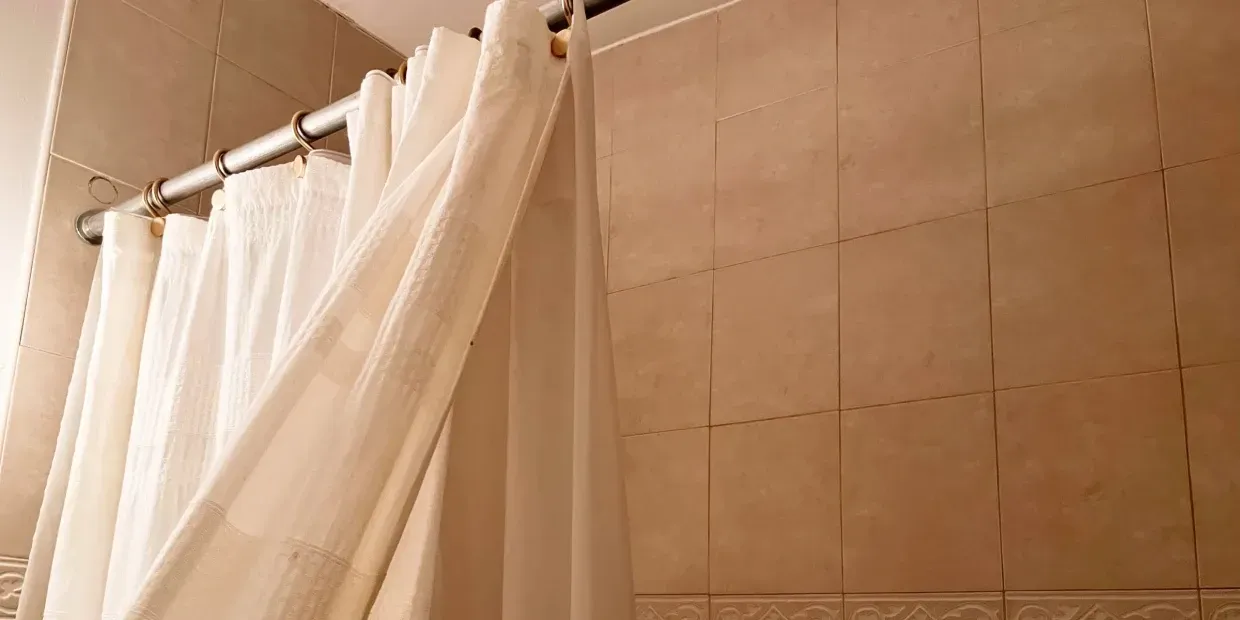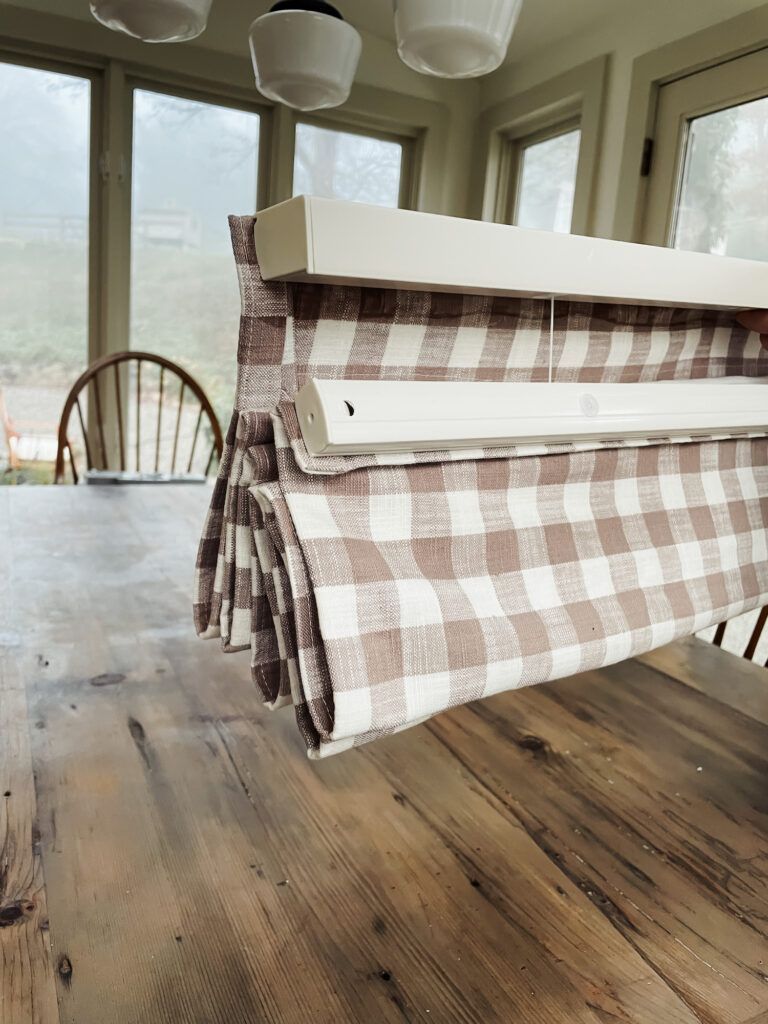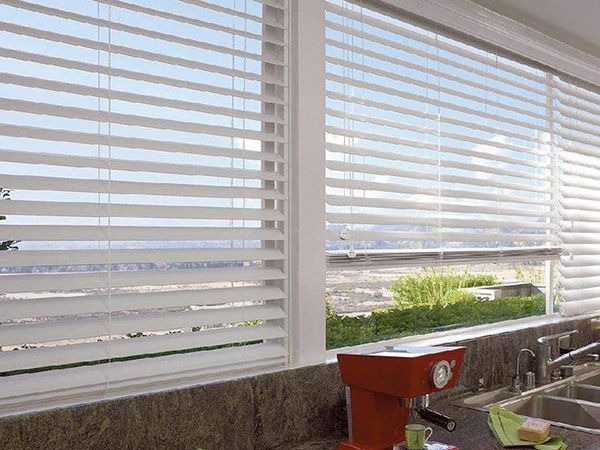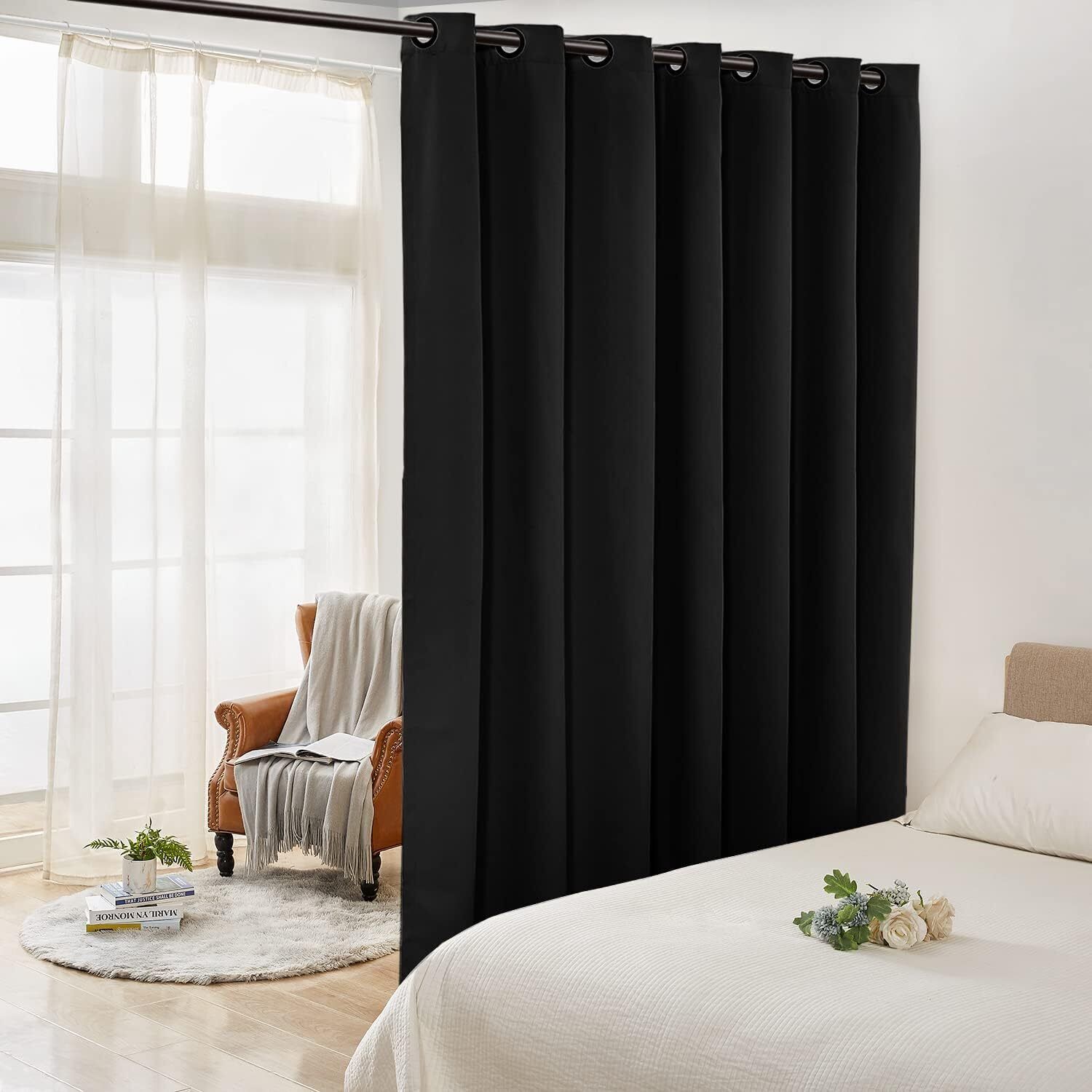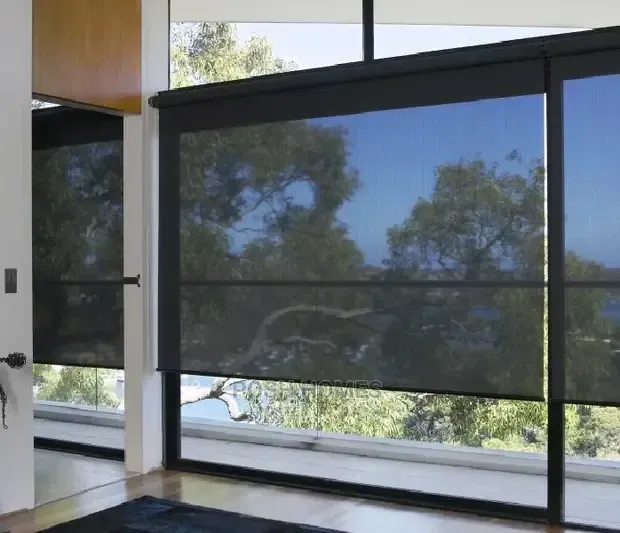Can You Use a Regular Curtain as a Shower Curtain?
TLDR;
Yes, you can use a regular curtain as a shower curtain—but only if you pair it with a waterproof liner and take extra steps to protect it from moisture and mildew. However, it’s not always the most practical or durable solution for a humid bathroom environment.
DIY Shower Curtain Alternatives That Actually Work
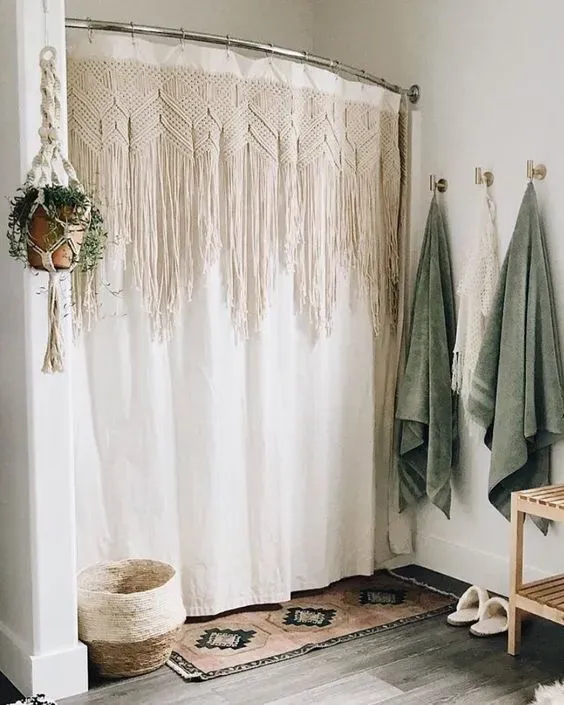
If you’ve ever looked at a beautiful curtain and thought, “Why can’t I use this instead of a shower curtain?”—you’re not alone. Many homeowners love the idea of bringing stylish, non-traditional fabrics into their bathroom space. Whether it’s for aesthetic reasons, budget constraints, or creative expression, repurposing a regular curtain—or even considering Blinds as Shower Curtain solutions—is a popular DIY curiosity.
But here’s the short answer: it can work—with the right setup and materials. In this blog, Love Is Blinds GA dives deep into the practical, hygienic, and design considerations you need to know. We’ll break down everything from materials and moisture-proofing to smarter window covering alternatives for bathrooms.
What’s the Difference Between a Regular Curtain and a Shower Curtain?
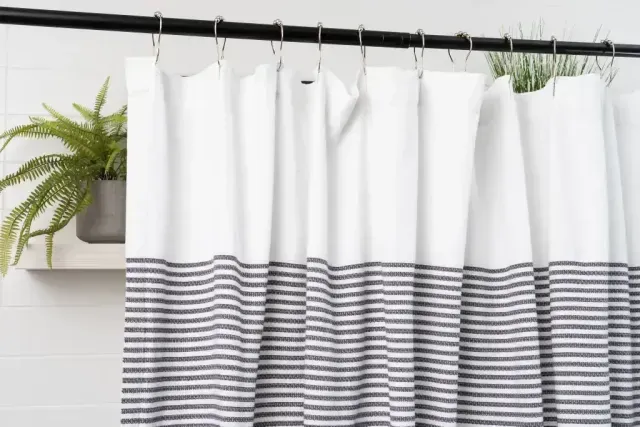
A regular curtain and a shower curtain may look similar, but they serve very different purposes in high-moisture environments like bathrooms.
Key Functional Differences
- Water resistance: Shower curtains are designed to repel water. Regular curtains usually absorb it.
- Mildew and mold resistance: Shower curtains are made to resist fungus growth. Regular fabric is not.
- Ventilation tolerance: Shower curtains can dry quickly in steamy conditions. Most fabrics used for regular curtains trap moisture and stay wet longer.
Material Breakdown
| Curtain Type | Common Fabric | Water Resistant? | Mildew Resistant? |
|---|---|---|---|
| Shower Curtain | Vinyl, PEVA, polyester blends | Yes | Yes |
| Regular Curtain | Cotton, linen, velvet, silk | No | No |
- Shower curtains often use synthetic blends that can endure direct water contact.
- Regular curtains like cotton or linen can become soggy, heavy, and susceptible to mildew when exposed to constant humidity.
Dimensions & Hanging Methods
- Regular curtains are often too long or too short for a shower setup.
- Shower curtains come with pre-installed grommets spaced for shower rods.
- You may need to retrofit a regular curtain with hooks or grommets to hang properly in a shower.
Can You Really Use a Regular Curtain in the Shower?
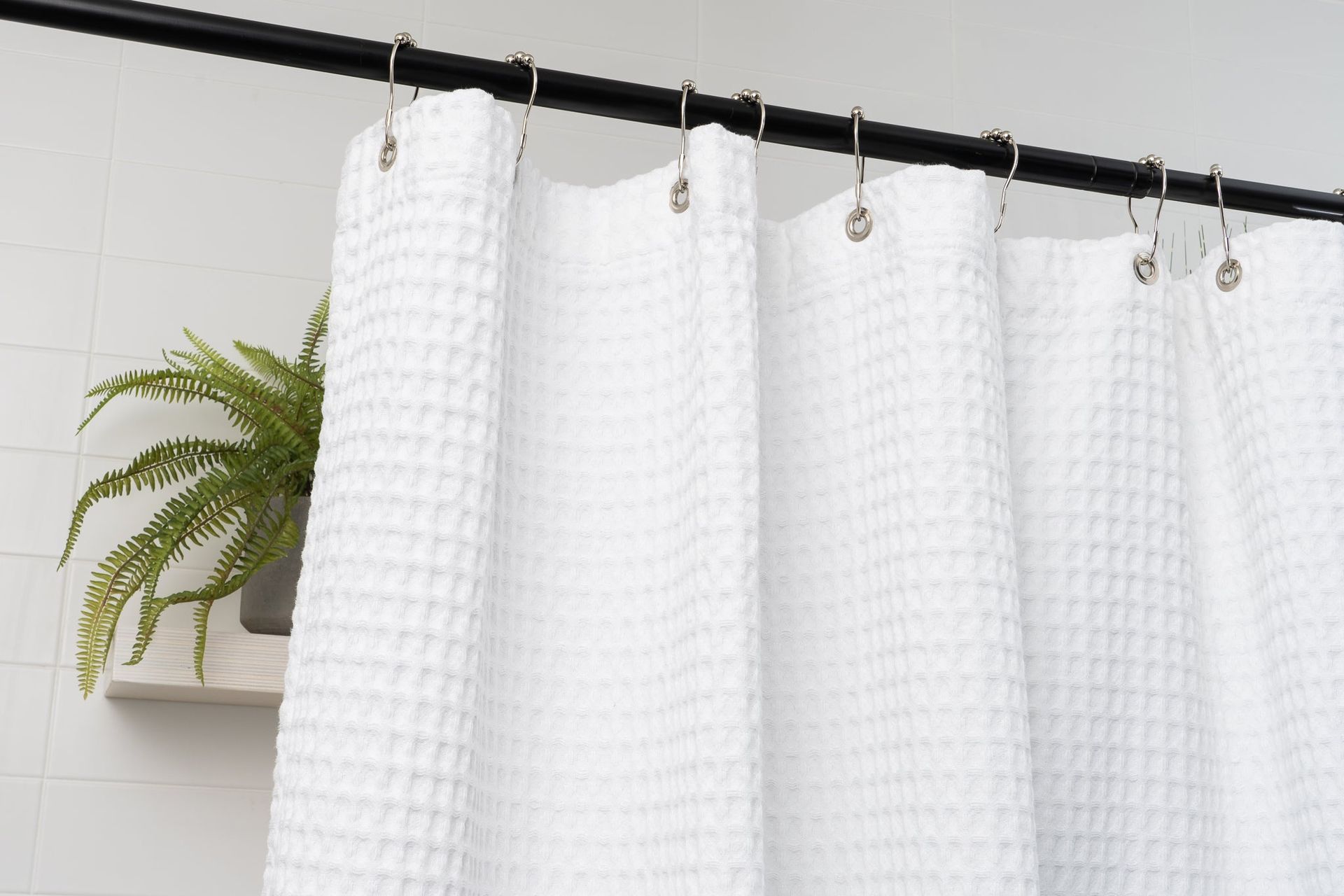
Yes—but only under certain conditions.
When It Might Work
- As a decorative outer layer: You can use a regular curtain outside a waterproof liner for a layered look.
- In guest bathrooms with low usage: If the shower isn’t used daily, you may get away with a non-shower curtain.
- Short-term solution: For photoshoots or temporary installations.
Why It’s Not Ideal Long-Term
- Traps moisture and takes longer to dry.
- Higher risk of mold and mildew.
- May warp, discolor, or deteriorate over time.
Pros and Cons Breakdown
| Pros | Cons |
|---|---|
| Stylish and customizable | Not waterproof |
| Cheaper than designer shower curtains | Requires extra maintenance |
| Can be repurposed from existing decor | May cause water leakage or damage |
How to Convert a Regular Curtain into a Shower Curtain
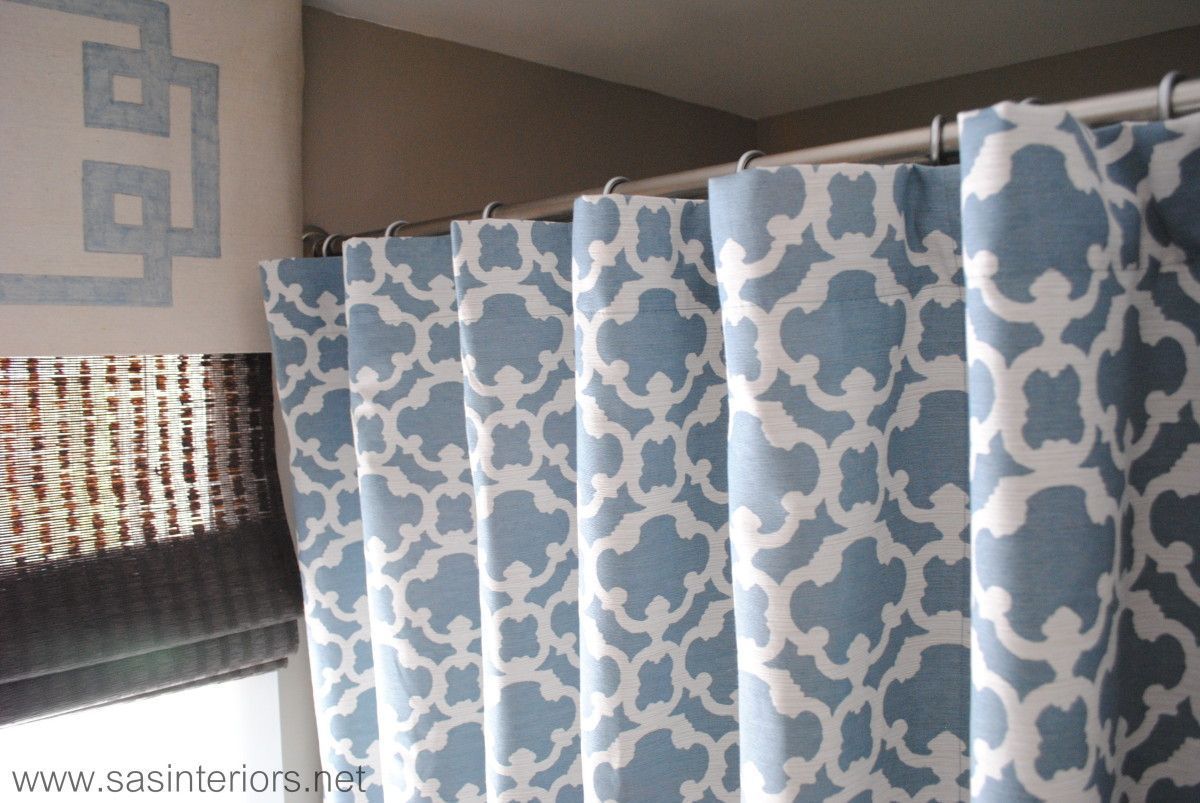
If you’re determined to DIY, here’s how to make it work safely and stylishly.
Materials You’ll Need
- A
fabric curtain (preferably polyester or tightly woven cotton)
- Shower curtain liner (vinyl or PEVA)
- Waterproof spray for fabric
- Grommet kit or
shower curtain clips
- Shower rod and
hooks
Step-by-Step Instructions
- Measure the curtain: Make sure it covers the shower opening completely (both length and width).
- Apply waterproof spray: Use a water-repellent treatment on both sides of the fabric and let it dry completely.
- Install grommets or use clips: Create evenly spaced holes at the top using a grommet kit, or use curtain clips if the fabric is too delicate.
- Pair with a liner: Always install a proper shower curtain liner behind your fabric curtain to act as the waterproof barrier.
- Hang it up: Use shower curtain rings or hooks to hang both the liner and the curtain securely on the rod.
Safety & Hygiene Tips
- Keep the liner
inside the tub and the fabric curtain
outside.
- Use bathroom ventilation (fan or open window) after showers.
- Wash and dry the curtain regularly to prevent mildew buildup.
Moisture and Maintenance: Using Fabric Curtains in Bathroom Spaces
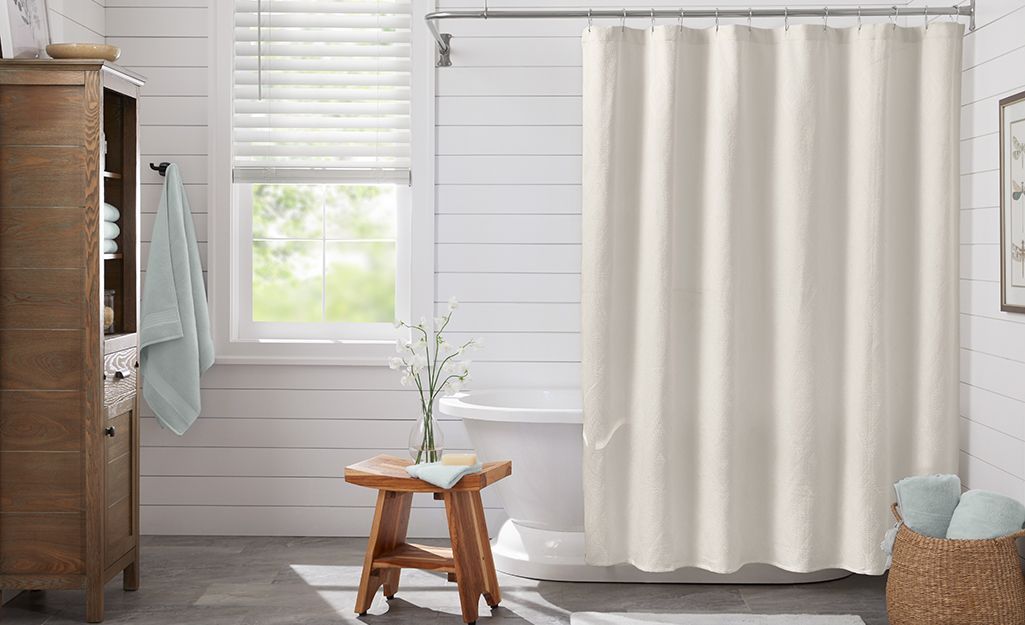
Bathrooms are high-humidity zones—perfect breeding grounds for mold and mildew.
How Mildew Forms
- Constant steam and moisture settle on absorbent surfaces like cotton or linen.
- Without proper ventilation, water lingers and feeds mildew growth.
- Fabric stays damp, especially near tub edges or floors.
Tips to Prevent Fabric Damage
- Use a
dehumidifier or
bathroom fan regularly.
- Avoid using
thick or plush fabrics like velvet or brocade.
- Choose
polyester or nylon blends, which dry quickly and resist moisture.
- Wash your curtain in hot water with vinegar or baking soda to kill mold spores.
Cleaning Frequency
- Wash the curtain and liner every
4–6 weeks.
- Spot-clean visible mold immediately.
- Always air dry or tumble dry on low after washing.
Why Blinds and Shades Might Be a Smarter Bathroom Option
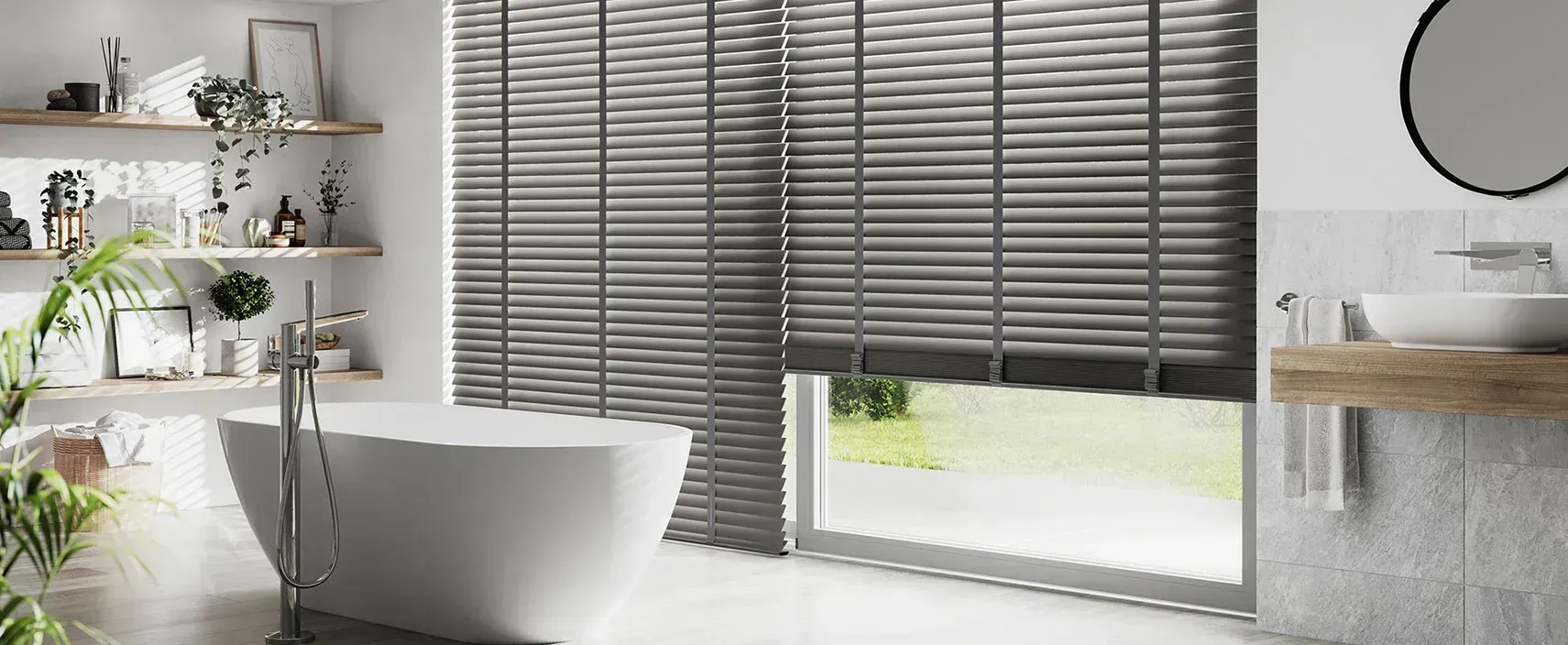
While we’re on the subject of bathroom decor, let’s talk about the window treatments in your bathroom.
The Problems with Curtains on Bathroom Windows
- Attract moisture and mildew
- Block natural light when wet or heavy
- Difficult to clean regularly
Moisture-Resistant Window Treatments You Should Consider
Love Is Blinds GA offers solutions that outlast traditional curtains and look beautiful doing it.
Best Blinds and Shades for Bathroom Humidity
- Faux wood blinds: Look like real wood but resist warping and moisture.
- Vinyl or composite shutters: Easy to clean and resistant to mold.
- Roller shades: Sleek, minimal, and moisture-tolerant.
- Motorized blinds: Keep your hands dry—operate with the push of a button.
Should You Use a Regular Curtain as a Shower Curtain?

If you’re looking for a temporary, budget-friendly, or design-driven solution—yes, using a regular curtain as a shower curtain can work.
But for daily use and long-term durability? It’s not the best choice.
Our Recommendation
- Best-case scenario: Use a regular curtain as an outer layer
with a liner.
- Worst-case scenario: No liner + absorbent fabric = mildew nightmare.
- Smarter option: Invest in a proper shower curtain or moisture-resistant window treatments.
FAQs

